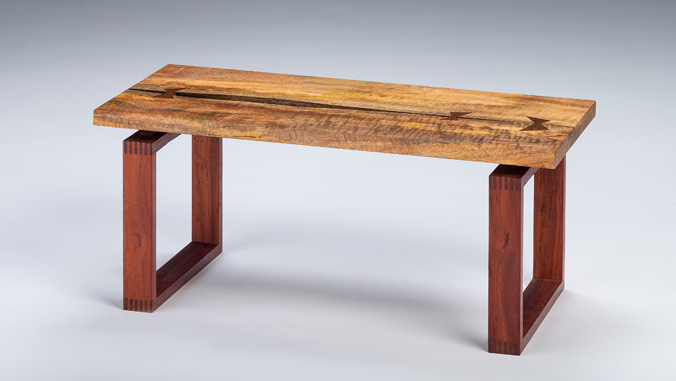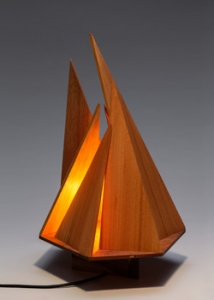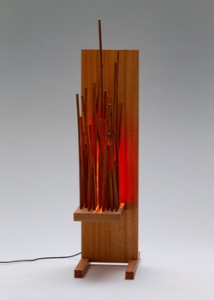
To introduce students to the strength and beauty of local woods that are sustainably produced in Hawaiʻi’s forests, University of Hawaiʻi at Mānoa School of Architecture students earned awards at the Innovation+Imagination (I+I) Student Challenge, which is on exhibit at Hawaiʻi’s Woodshow 2021, November 20–December 5.
The I+I Student Challenge is open ended, and gives the students plenty of room to explore their own interests through the rare opportunity for hands-on learning. They learn about the proper ways to design for wood, and how to safely use all the tools they need to reach their own creative expression.

“Competing in a Hawaiʻi Woodshow event helps architecture students develop a connection between the designer and the material,” said Steve Hill, director of the fabrication laboratory in the School of Architecture. “Understanding a material is important because it brings the designer’s imagination into reality and learning about that material helps the designer push the boundaries of what can be imagined.”
Student winners
Beau Nakamori won first place in the I+I Student Challenge for his piece “Beautie Bench,” which was crafted entirely from local woods. Nakamori also won second place for his piece “The Primavera Box,” and was awarded “Most Promising Young Artist” at Hawaiʻi’s Woodshow.
“I actually let the wood tell me what to build,” said Nakamori. “If the wood has a certain crack or a beautiful live edge…it tells how to build the piece and what it wants to become. I think this relates to why competing in an event like the Hawaiʻi Wood Show is so important for students of architecture. It allows for the ability to design through listening. As architects, we must listen to the existing site conditions and community to understand what needs to be designed. It is our kuleana.”

Aidan Brown won third place for his piece “Luminous Shards.”
Logan Aruga won a Kent Award for Best Emerging Artist with his piece “Forest.” Inspired by his family trip to Japan and visiting the Sagano Bamboo Forest. Aruga created the phenomenon of light filtering through the dense bamboo stalks represented by the twisting of the wooden dowels and the resin filled back light.
“At first I was surprised. After helping set up the gallery and seeing everyone’s pieces, I knew winning an award would be difficult because of the fierce competition,” said Aruga. “However, I’m very grateful to have been awarded the Kent Award for Best Emerging Young Artist and very thankful for having Professor Steve Hill and my peers’ help along this journey.”
Promoting sustainability
Sustainability and environmental responsibility are the core of the curriculum at the School of Architecture. Because of Hawaiʻi’s remote location, it can be difficult for architecture students to access materials that are not imported across thousands of miles.
The I+I Student Challenge breaks down that barrier. All of the wood is donated by local artisan sawmills. With that donated wood, each student is given a free hand-selected bundle of interesting, sustainably sourced, material. The production, processing and transportation cycle of this locally harvested wood is much more sustainable than imported lumber. At the same time, introducing young designers (and the public through the exhibition) can raise awareness and incrementally build the market for a responsible forest industry in Hawaiʻi.
“The public exhibition presents the work of these young voices, the next generation of Hawaiʻi’s thinkers and creators to the community at large,” said Hill. “At the same time it introduces the public to the strength and beauty of Hawaiʻi-grown woods. Additionally, the makers and public alike begin to learn about the differences between endemic species, Indigenous species, imported and even invasive species. Hopefully that leads to a deeper appreciation for all the benefits that our forests provide—and that goes far beyond a little bit of lumber in a gallery.”
This event is an example of UH Mānoa’s goal of Building a Sustainable and Resilient Campus Environment: Within the Global Sustainability and Climate Resilience Movement (PDF) and Enhancing Student Success (PDF), two of four goals identified in the 2015–25 Strategic Plan (PDF), updated in December 2020.

